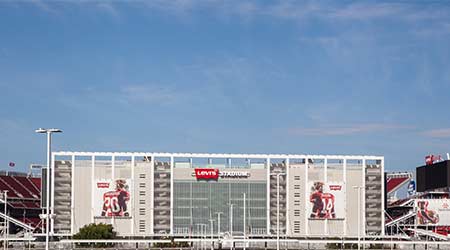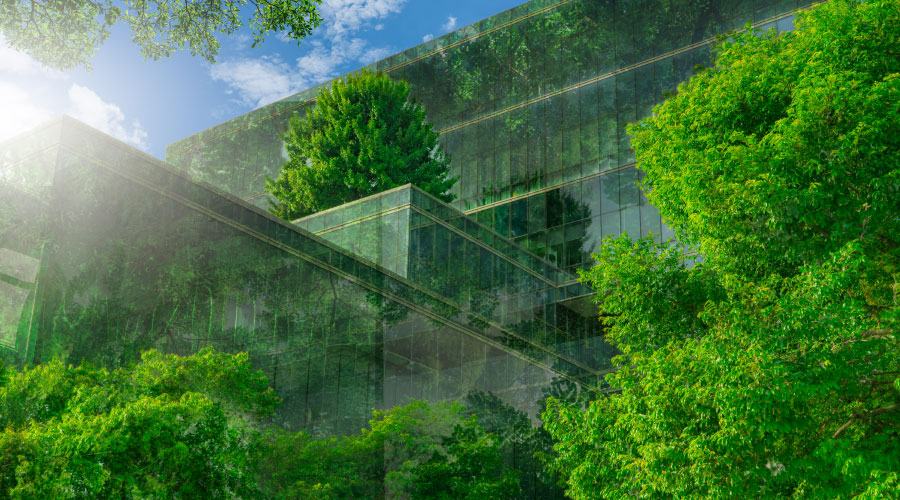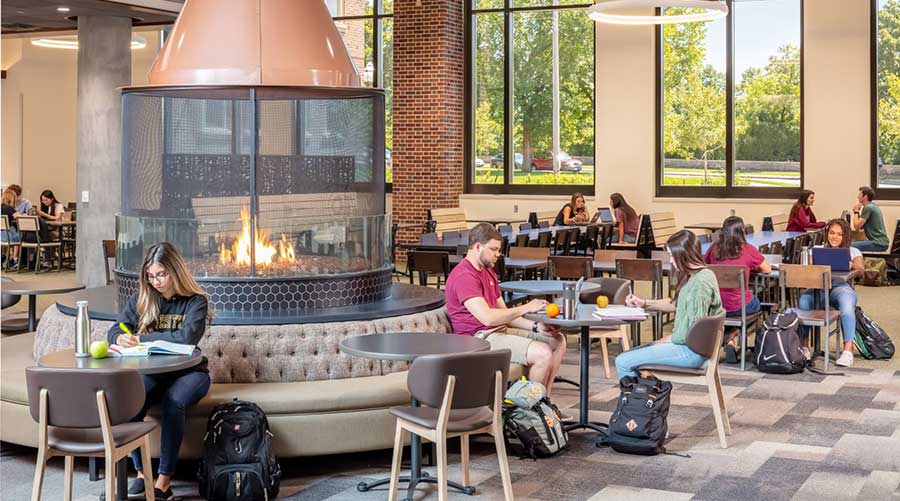 Levis Stadium
Levis Stadium USGBC Perspective: Large-Scale Venues Earn LEED Certification
Fourth of a four-part Green Building Report.
From the LEED Gold Levi Stadium in Santa Clara, Calif., that hosted Superbowl 50 to the LEED Gold New Orleans Jazz Market that was originally constructed in 1848, large-scale venues represent some of the most iconic buildings in our cities. These venues not only serve as central gathering spaces to engage, connect, and inspire thousands of people around the arts, sports, and culture, they also provide a unique central platform to demonstrate social and environmental practices. Through the pursuit of LEED certification, venues such as convention centers, sports stadiums, performing arts centers, community centers, and public assembly spaces all over the world are enhancing and transforming our built environment and changing the way these important gathering spaces are designed, built, and operated.
While large-scale venues may be different from each other in use and building type, there are many commonalities, such as a limited daily staff or number of days per year the building is used compared to a typical commercial space. For a professional sports stadium, some days there may be as few as 30 people on-site, yet upwards of 50,000 people during events, which LEED takes into consideration when defining regularly occupied space. In addition, LEED maximizes resource efficiency, indoor air quality, and waste diversion, which is especially important during surge occupancy. In fact, between 2015 and 2018, LEED-certified buildings in the United States are estimated to have more than $2.1 billion in combined energy, water, maintenance, and waste savings.
Sports Stadiums use LEED
Currently, there are more than 30 professional sports stadiums in the United States participating in LEED, and many more at the international level. The sports industry, in particular, has embraced the role of environmental leader and views green building as a tool, not only to decrease annual operating costs, but also improve facility performance, reduce environmental footprint, and improve the communities where venues are located. From reducing resource consumption to prioritizing public transportation options and creating healthier spaces for occupants, these venues serve as a platform to educate fans about the benefits of environmental stewardship and, as such, play a crucial role in building broad support for sustainability. Fans experience the benefits of the venue’s sustainable features firsthand and witness water conservation, energy efficiency, and waste management measures in action.
The LEED Silver Nationals Park in Washington, D.C., was the first major professional stadium in the United States to become LEED certified and continues to serve as a model for future stadium construction. Located in the Southeast area of the city, the 41,546-seat ballpark has also served as a catalyst for urban revitalization in the surrounding Anacostia River and Navy Yard neighborhood. Initiatives in place at Nationals Park, like dual-flush toilets and low-flow faucets, have reduced overall water consumption by 30 percent, conserving an estimated 3.6 million gallons of water per year.
Energy-conserving light fixtures installed at the park reduce light pollution and provide annual energy savings of 21 percent and are expected to save an estimated $440,000 over 25 years. A 6,300-square-foot reflective roof at the park also minimizes the amount of heat in the environment.
On a similarly large scale, convention centers are playing a critical role in the green building movement due to their size, the number of people they host every year, and the economic activity they help generate. More and more conference and event show hosts are now requiring proof of sustainable practices and clearly defined commitment in proposal requests, making sustainability an expectation in the market, rather than a consideration, especially in competitive regions.
The LEED Gold Los Angeles Convention Center served as host to the 2016 Greenbuild International Conference and Expo and was the first large convention center in the United States to receive LEED Building Operations and Maintenance (O+M) Gold recertification in 2015. Through the replacement of 30,000 square feet of lawn with drought-tolerant vegetation, the installation of waterless urinals and replacing 710 convention toilets with low-flow 1.28 gallons of water per flush toilets, an estimated 470,000 gallons of water was saved. Energy efficiency initiatives were also implemented, including a 500,000-square-foot cool roof project and an LED re-lamping project that improved safety and visibility along the backside of the building.
Through the pursuit of LEED, large-scale venues all over the world are realizing the triple bottom line — people, planet, and profit.
Related Topics:















